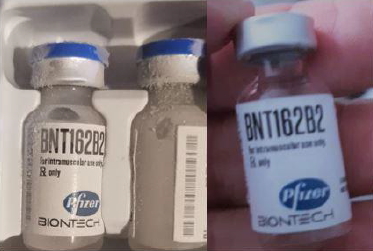Democrats are pushing ahead with their healthcare agenda. In the last few weeks, progressive lawmakers have introduced a new Medicare for All bill, proposed legislation that would implement a public option, and poured billions of dollars into expanding Obamacare subsidies.
The press is wondering how Republicans will respond. Last month, POLITICO asserted that there was "a big fat question mark about what vision of health care Republicans will offer to voters as the country emerges from the pandemic."
But there are plenty of ideas from the right for healthcare reform. An array of conservative activists, lawmakers, and free-market thinkers have been advancing a vision for healthcare policy that would reduce costs and expand consumer choice. Republicans would be wise to start talking about them.
Take a recent collection of ideas from Americans for Prosperity that they've branded the "personal option," in opposition to President Biden's public option. AFP's agenda focuses on tax breaks, cutting regulations, and boosting access to more flexible insurance options.
For example, the personal option envisions a significant expansion of health savings accounts, or HSAs. These accounts offer patients a tax-advantaged way to save for medical expenses. Beneficiaries can set aside up to $3,600 for individuals and $7,200 for families tax-free each year. Individuals keep that money forever—regardless of changes to their employment or insurance plan.
HSAs are particularly appealing to young Americans. More than 75% of eligible millennials have one, according to a 2018 report. In total, Americans currently contribute to more than 30 million HSAs, according to new data from HSA services firm Devenir.
Unfortunately, existing regulations prevent many people from opening HSAs. Only consumers with high deductible insurance plans are eligible to do so. It's illegal for Medicare beneficiaries to deposit money in the accounts. These types of rules prevent 90% of Americans from contributing to an HSA, according to AFP senior health policy fellow Dean Clancy.
Removing those restrictions could help reduce patients' healthcare costs. In a 2015 study, the National Bureau of Economic Research found that among a group of 13 million individuals, HSAs reduced overall healthcare spending by 15% annually.
Health reimbursement arrangements, or HRAs, offer similar value. They allow employers to set aside funds for workers to spend on health insurance. As a result, employees aren't bound to a single plan offered by their employer. They instead use that money in whichever way they choose.
In 2019, former President Trump implemented a rule that expanded HRAs. His administration projected that more than 11 million Americans would be enrolled in an HRA by 2029. That estimate included 800,000 previously uninsured people.
Since then, Republican lawmakers have proposed legislation that would codify that rule into law. The personal option urges Congress to continue pushing that bill forward.
The Health Policy Consensus Group has been advancing ideas similar to the personal option as part of its Health Care Choices 20/20 plan for years. It's also called on lawmakers to reform existing healthcare delivery models by rolling back regulations on telehealth.
Pre-pandemic, most physicians weren't allowed to provide telehealth services to patients living in another state. Lawmakers temporarily removed those restrictions during the pandemic. Those changes should be made permanent.
After all, receiving care virtually isn't just convenient for patients. It can generate significant healthcare savings—up to $121 per visit, according to a study published in the American Journal of Emergency Medicine. Over 80% of patients plan to utilize telemedicine after the pandemic, according to a recent poll.
These health policy proposals have one thing in common—they give patients greater control over their health care.
(They have another thing in common, too—they overlap with the "Pipes Plan," which I've articulated in several of my recent books.)
In contrast, Democrats are trying to take that choice away. Reps. Pramila Jayapal, D-Wash., and Debbie Dingell, D-Mich., have attracted 113 cosponsors of their new Medicare for All bill, which would ban private insurance and put every American on a government health plan. President Biden's public option would do the same, albeit on a slower scale.
Our country's leaders need to expand Americans' affordable healthcare options—not limit them. Thinkers on the right have loads of ideas for doing so.
https://www.forbes.com/sites/sallypipes/2021/03/29/conservatives-have-healthcare-ideas-too/


